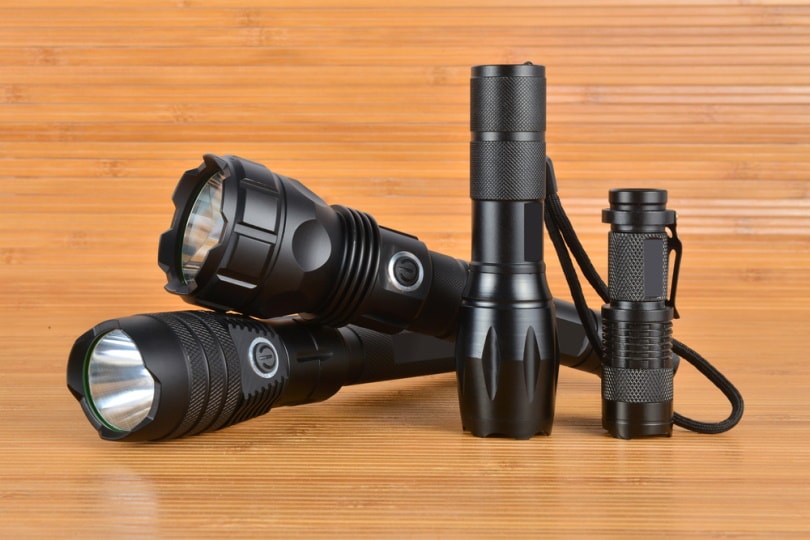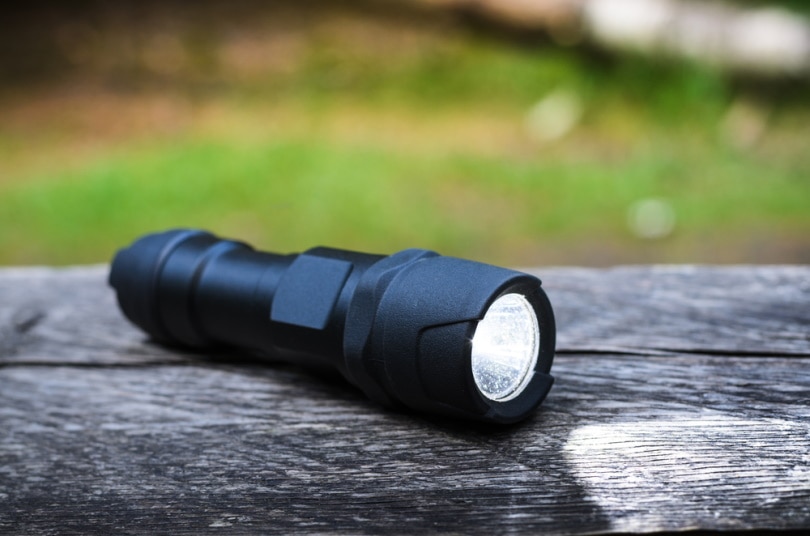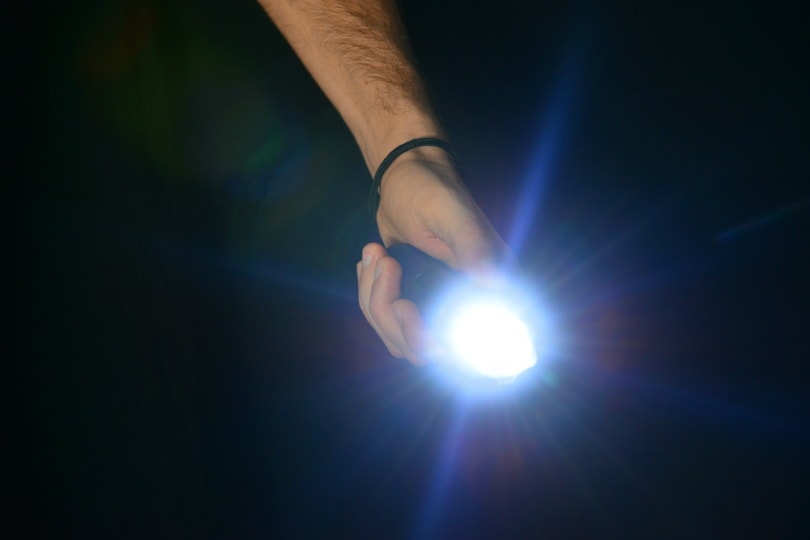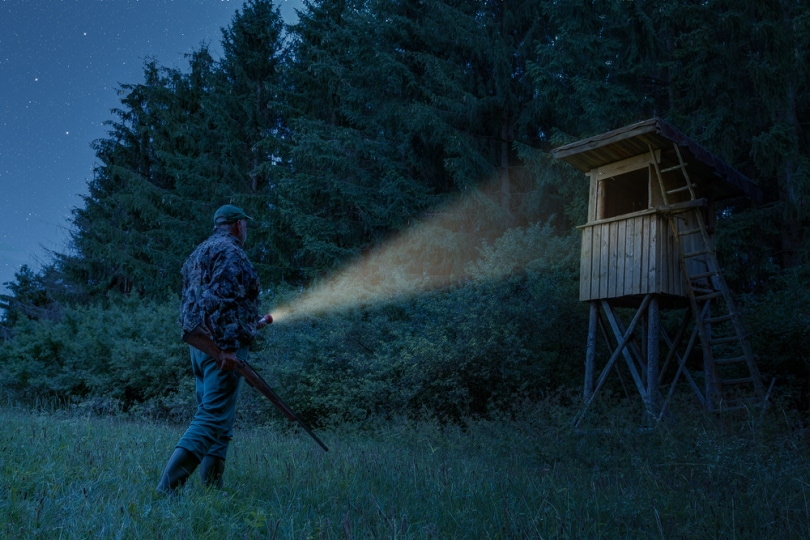What Is a Tactical Flashlight (When Should I Use One)?
Last Updated on

If you’ve been looking for a new flashlight, you will likely come across several with unique names. Companies use these buzzwords to sell more products, and one of the most popular is the tactical flashlight. The word tactical suggests a military application, which can confuse people simply looking for a flashlight to find something in their garage. That said, the tactical flashlight does have several features that might make it more desirable to own than the common generic brand, so keep reading to see if this modern tool is right for you.

What Is a Tactical Flashlight?
A tactical flashlight is a small, durable light made of aircraft-grade aluminum. It also has an ergonomic design that’s easy to grip tightly, and you can work all the controls with one hand. These flashlights are also extremely bright, pushing out more than 300 lumens in most cases, with some reaching more than 1,000 lumens. Many also have multiple light modes, like steady or strobe, and a long-lasting battery.

When Should I Use a Tactical Flashlight?
Utility
A tactical flashlight is a fantastic utility lamp. The light is ultra bright, so you’ll have no problem seeing into the darkest parts of your home, garage, or vehicle when you need something, and the light covers a wide area. Its small size is also easier to manage while you’re using it, and it stores away easily, so it’s ready when you need it.
Self-Defense
The primary reason to get a tactical flashlight is for self-defense. If you are under attack, shining the bright light of a tactical flashlight in the eyes of your attacker can temporarily blind them, giving you time to get away. The small size and easy-to-use controls enable you to use it quickly and instinctively. The hard airplane-grade aluminum body also enables you to use the flashlight as a blunt weapon, and the strobe light option can disorient your attacker.

What Should I Look For When Choosing a Tactical Flashlight?
- Lumen: The most important thing to look for when choosing a tactical flashlight is the brightness of the light. Most companies measure brightness in lumens, and you want a product with a light brighter than 300 lumens. Many tactical flashlights have over 1,000 lumens, and we recommend getting the most brilliant light that you can find.
- Tail-Cap Switch: A tail-cap switch is fairly standard on tactical flashlights, but we recommend checking each one anyway. A tactical flashlight with no tail-cap switch might be harder to use in an emergency, costing you valuable time.
- Strobe: The strobe on many tactical flashlights can disorient an attacker as you run away because the blinking lights make it hard for the brain to focus.
- Waterproof: If you are using a tactical flashlight as a self-defense tool, we recommend looking for a waterproof design so you can always have it with you, even in harsh weather.


Summary
A tactical flashlight can be quite handy as a utility light and even doubles as a defensive weapon that can blind your attacker, creating valuable time to escape. It’s small, and you can operate it with one hand. The strobe function can disorient attackers or communicate with friends, making the tactical flashlight much more than a buzzword product. It’s a useful tool that can help keep you safe.
Read More: Can You Take a Flashlight on a Plane? Does It Depend on Type?
- You might also like: 8 Best Police Flashlights: Reviews, Top Picks, And Buyer’s Guide
Featured Image Credit: MargoLev, Shutterstock
About the Author Ed Malaker
Ed Malaker is a veteran writer who contributes to a wide range of blogs covering information on computer programming, pets, birding, tools, fitness, guitars, and optics. Outside of writing, Ed is often found working in the garden or performing DIY projects in the house. Ed is also a musician, spending his time composing music for independent films or helping people repair their guitars.
Related Articles:
Binocular Magnification Chart: Numbers & Distances Compared
What Is the Best Binocular Magnification for Hunting? Optical Features Explained
When Were Binoculars Invented? History, Today & Future
Can You Use Binoculars to Look At Stars? How to Choose the Right Pair
How to Clean a Refractor Telescope: Step-by-Step Guide
How to Clean a Telescope Eyepiece: Step-by-Step Guide
How to Clean a Rifle Scope: 8 Expert Tips
Monocular vs Telescope: Differences Explained (With Pictures)
